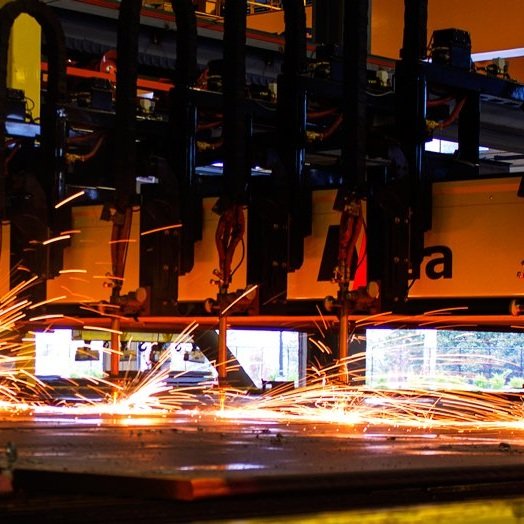Three steps one manufacturer took to get fast, quantifiable returns from Guidewheel

Overall
A multi-plant industrial processor shares an example of how they have been able to use Guidewheel to deliver near-instantaneous financial returns.
Context and problem
An industrial processor has several plants across North America. Each plant performs a variety of different processes, and therefore has a variety of different types of machines.
Visibility into their machines varies dramatically across both machines and plants. For a few pieces of newer and more complex equipment, they have good visibility through Rockwell systems.
However, visibility is the exception rather than the rule. For the vast majority of their equipment, they are tracking manually. To track performance for these “offline” machines, the team has to track and enter metrics manually on spreadsheets or, in some cases, on large whiteboards.
Two of those key metrics are downtime—which is costly for the operation—and Overall Equipment Effectiveness (OEE).
Like many companies, they feel urgency around driving OEE. However, all the options they have explored for visibility into OEE have had frustratingly long timelines. For example, they had already been working with a potential system for several years and were still at least a year away from being able to go live with the first site. In the meantime, they tried to use internal BI tools but were frustrated with the iteration needed to get relevant KPIs and reporting for the team on the plant floor.
Their goal is to push information down to visual displays to support operations and supervisors in making the right decisions in the moment on the plant floor: “We want to tell the story to an operator of how they’re doing,” but had not yet found a way to do that effectively.
Solution
They turned to Guidewheel for a plug-and-play solution that can provide near-instantaneous visibility—without adding more burden for their busy IT team.
They started by deploying Guidewheel in one of their plants. Within that plant, they got about 20 people accessing the Guidewheel system, including managers and supervisors. The Guidewheel team supported the team through setup, kickoff, and training to align the team’s workflows to benefit from and drive results using Guidewheel.
Soon, they were able to quantify enough improvement that the Guidewheel system quickly paid for itself—plus driving an additional $1,000-$2,000/month in savings. Now, they are excited to use even more capabilities of the system and drive even more savings.
Here we share the three steps they followed to quickly achieve those results:
Step 1: “What are the characteristics of a great day versus a mediocre day?”
With the visibility Guidewheel provides, they have been able to get some insights to immediately improve their operations: For example, they had previously thought their maximum possible runtime was 65%. However, they were quickly able to see that while many days were slower, on some days they were able to achieve up to an impressive 85% uptime. Together with the team, they analyzed what happened on those best days—whether it was having instructions ready, pre-planning the day before—to understand what changes can help them improve on other days as well.
Step 2: “Where is the simple stuff that adds up to a big impact?”
They also used the visibility in Guidewheel to identify a number of very simple but impactful areas to improve. They started by asking questions such as, “How come the machine starts at 7:45am even though the shift starts at 7:00?”
Step 3: “What are the right escalating alerts for our team?”
Based on those insights, they set up Guidewheel alerts to make sure their team could find out about and respond to problems in a timely manner. For example, if a machine is down for 30 minutes it alerts maintenance. Then, after 60 minutes the alerts escalate further to others on a team.
They shared an important learning that while initially, their excitement for the alerts led them to set up alerts for every tiny thing, the volume of alerts quickly overwhelmed the team. Now, they have pared back the alerts to only send when something truly requires action.
Similarly, they reflected on what they will do differently in the future overall: At first, they had wanted to see so much data that they pulled such an overwhelming amount of data that it was too much to take action. Now, they are finding a balance on focusing on the most simple and actionable data.
The team shared that from the time we started to where they are now, the system has already covered its cost and driven an additional $1,000 to $2,000 a month. Next, they look forward to continuing to increase their use of Guidewheel’s other features, and deploy across even more machines for greater visibility.
Our thanks to the Guidewheel customers who share the examples highlighted here. If you and your team would like to showcase how you are using Guidewheel to drive business results—or don’t yet use Guidewheel, but would like to!—send us a note at info@guidewheel.com.

